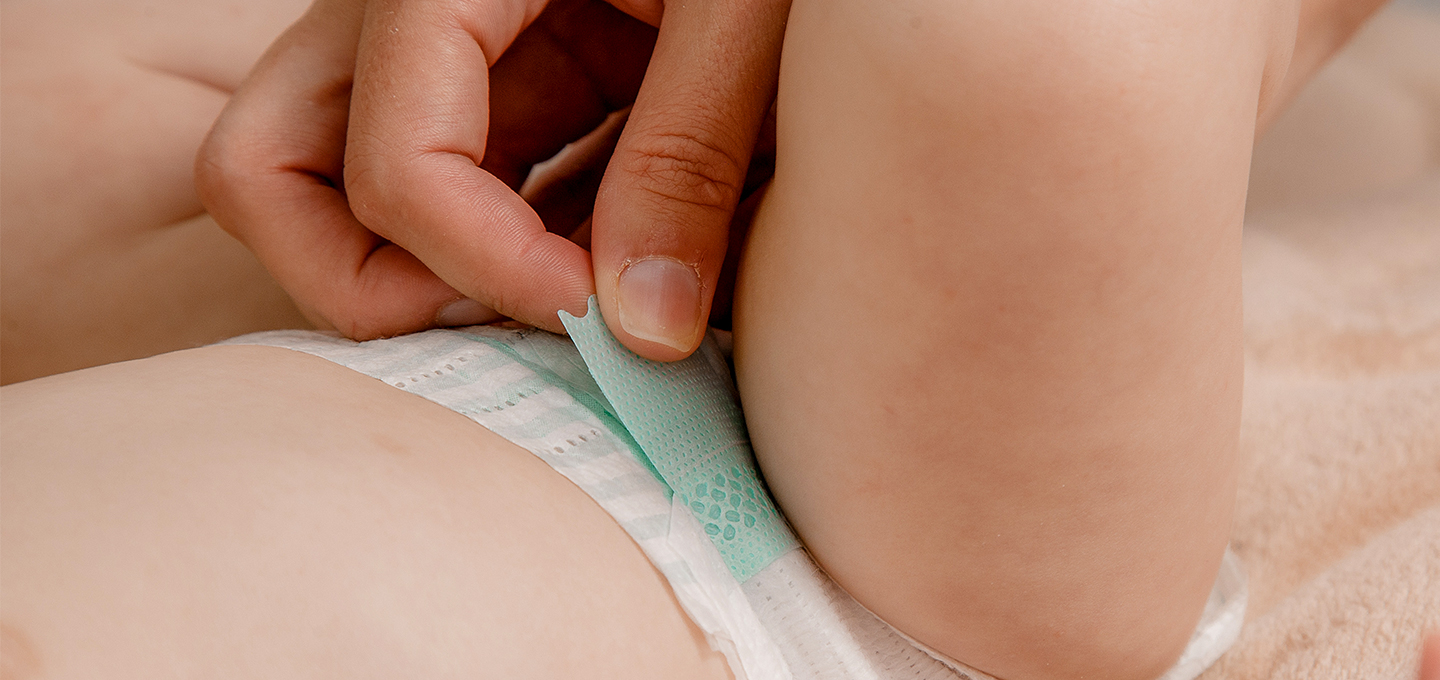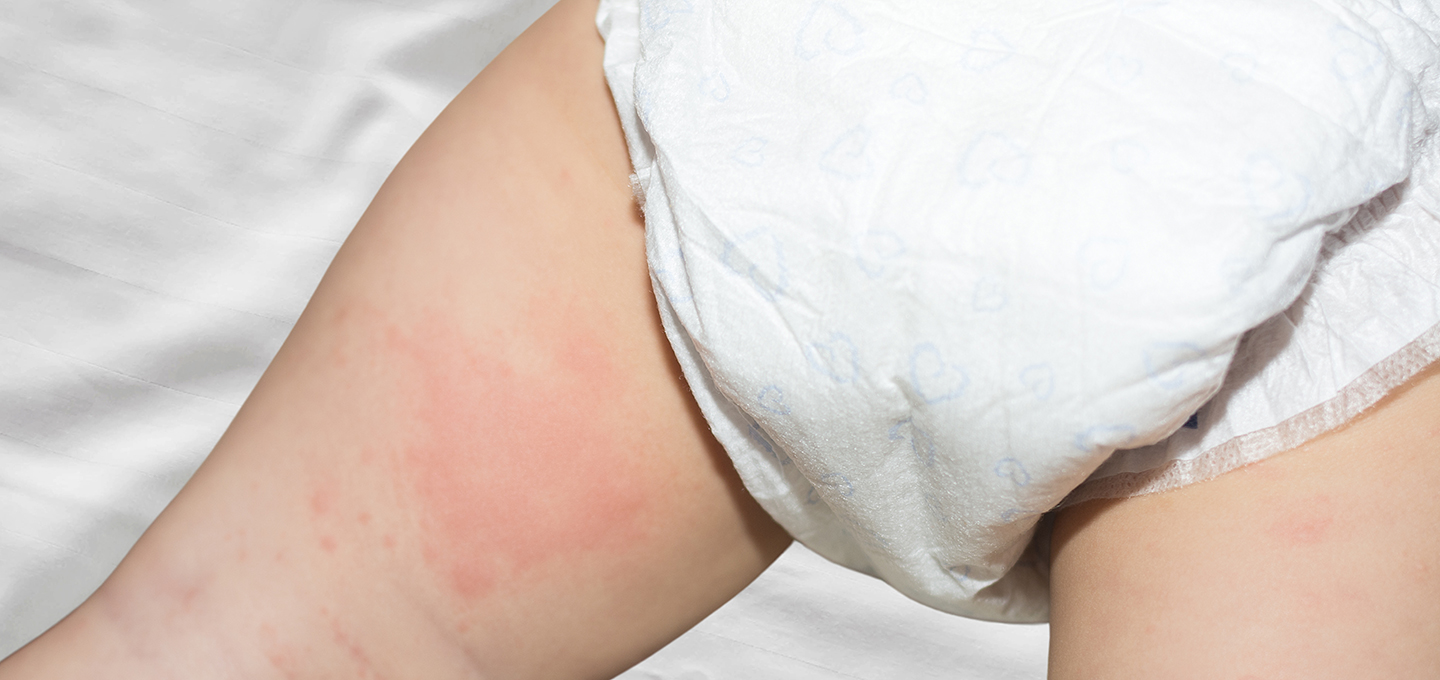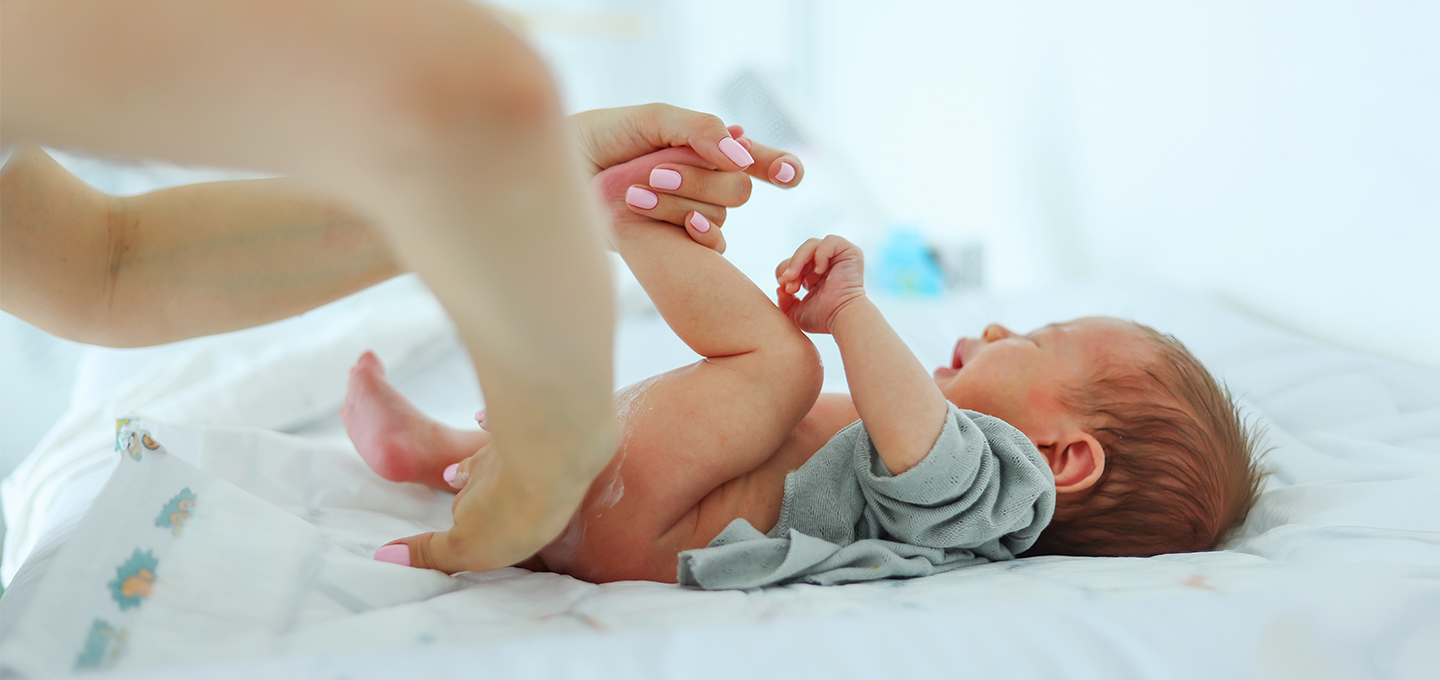
Yeast Diaper Rash: Causes, Symptoms, and Treatment
4 min readUpdated November 16, 2025

MD, FAAP
4 min readUpdated November 16, 2025

MD, FAAP
Yeast diaper rash is a common type of diaper rash caused by an overgrowth of Candida, a type of yeast that thrives in warm, moist environments. Unlike regular diaper rashes, yeast infections often appear as bright red or purplish patches with defined edges and may include satellite spots (small dots nearby). They can develop after antibiotic use, prolonged wetness, or when a regular rash isn't healing.
Key points to know
Understanding the signs and knowing how to treat yeast diaper rash early can help prevent discomfort and complications. In this article, we’ll dive deeper into causes, symptoms, treatments, and prevention strategies to help you manage and heal your baby’s skin.
What Is a Yeast Diaper Rash?
A yeast diaper rash, also known as Candida diaper dermatitis, is a type of diaper rash caused by an overgrowth of Candida, a type of yeast that naturally lives on the skin. While this fungus is usually harmless, it can multiply rapidly in warm, moist environments—like your baby’s diaper area—leading to an irritating rash. Yeast rashes often develop when a regular diaper rash lingers too long or after antibiotic use, but they can also show up on their own. This kind of rash can be more persistent than other types and may require antifungal treatment to clear.
Understanding what a yeast diaper rash is can help you recognize it early and take steps to soothe your baby’s discomfort.
Diaper Rash Vs Yeast Infection
Understanding the difference between a diaper rash vs yeast infection is key to finding the right treatment for your baby. A regular diaper rash is usually caused by irritation from moisture on the skin, friction, or an imbalance in skin pH. This type of rash typically appears as pink, red, or darker patches of skin and is often managed with frequent diaper changes and gentle care.
A yeast diaper rash, however, is caused by an overgrowth of the fungus Candida. This rash is more intense, with bright red or purple patches that may have raised edges or small bumps, often appearing in the skin folds. Unlike a regular diaper rash, a yeast diaper rash doesn’t improve with standard diaper creams and may persist or worsen without proper treatment.
To differentiate between a diaper rash vs yeast rash, look for signs like a more vivid color, defined borders, and clusters of red spots. If you suspect a yeast infection, it’s important to consult your baby’s healthcare provider for appropriate treatment.
Recognizing the signs of a yeast diaper rash/Candida dermatitis early in your baby may help you provide the right care and bring relief to your little one.
What Does a Yeast Diaper Rash Look Like?
A yeast diaper rash often appears as a bright or deep red or purplish rash with slightly raised edges and may include small red or pink bumps, especially at the outer edges. On darker skin tones, the rash may look more purple, brown, or gray instead of bright red. The rash usually starts in the folds of the skin and can spread outward. It may look shiny, inflamed, and feel warm to the touch.
What Causes Yeast Diaper Rash?
The primary cause of a yeast diaper rash is candida overgrowth, which thrives in warm, moist environments like a baby's diaper area. While this fungus naturally exists on our skin, certain conditions may lead to it multiplying and causing an infection.
One of the most common triggers is leaving a wet or soiled diaper on for too long, allowing moisture to build up. Additionally, babies who are taking antibiotics—or whose breastfeeding parent is on antibiotics—may be more prone to developing yeast rashes, as these medications may disrupt the natural balance of bacteria and yeast in the body.
Other contributing factors may include larger stool volumes and inadequate cleansing and drying, which can trap moisture and create friction, allowing yeast to thrive.
Yeast Diaper Rash Treatment
When it comes to yeast diaper rash treatment, the most important step is to consult your baby’s healthcare provider. Yeast infections in the diaper area are caused by Candida and typically require prescription or over-the-counter antifungal medications to clear.
Treatment usually involves:
If your baby’s rash isn’t improving within 3 to 5 days or seems to be getting worse, it’s important to follow up with your healthcare provider. Yeast rashes can be persistent and may require a stronger or different treatment approach.
Once medical treatment is underway, there are several at-home care strategies you can use to support healing and help prevent future flare-ups.
Treating Yeast Diaper Rash at Home: Remedies
Alongside prescribed antifungal treatment, treating yeast diaper rash at home focuses on keeping your baby’s skin clean, dry, and protected. These supportive measures can help ease discomfort and reduce the risk of reinfection:
Using a combination of medical treatment and these yeast diaper rash home remedies can help bring relief faster and protect your baby’s skin from further irritation.
Yeast Diaper Rash Cream/Ointments
When choosing a diaper rash cream for yeast infections, always follow your healthcare provider’s recommendations. Some over-the-counter options can help, but not all diaper creams are suitable for treating yeast.
Commonly used options include:
Although many of these creams are available at pharmacies, it’s always best to consult your healthcare provider before use, especially for infants under six months. They can recommend the most effective and safest yeast diaper rash creams or ointments for your child’s specific condition.
When to Contact a Healthcare Provider
Most mild cases of yeast diaper rash improve with antifungal creams and proper diaper care. However, there are times when it’s important to reach out to your baby’s healthcare provider for further evaluation and guidance.
Contact your baby’s healthcare provider if:
Persistent or severe cases of yeast diaper rash may require prescription-strength medication or a different treatment approach. A healthcare provider can confirm whether the rash is caused by yeast or another condition and help you find the most effective treatment plan.
FAQS AT A GLANCE
Regular diaper rash creams (like those with zinc oxide or petrolatum) can help protect the skin and reduce irritation, but they do not treat the underlying fungal infection. For a yeast diaper rash, an antifungal cream is necessary to stop the growth of Candida. Always consult your baby’s healthcare provider for the right treatment.
The Bottom Line
Yeast diaper rash may be uncomfortable for your baby, but with the right care, it’s manageable. Understanding the difference between a yeast diaper rash and a regular diaper rash and recognizing the signs early allows you to choose the right treatment. Frequent diaper changes, keeping the area clean and dry, and using barrier creams may help prevent future outbreaks. If standard treatments don’t work, consult your baby’s healthcare provider.
For ongoing savings on Pampers products, download the Pampers Rewards app and start saving today.
Read more about Baby
Related Articles
Join a World of Support
through Pregnancy and Parenthood.
TRACK WITH TOOLS
LEARN WITH EXPERTS
GET REWARDED










